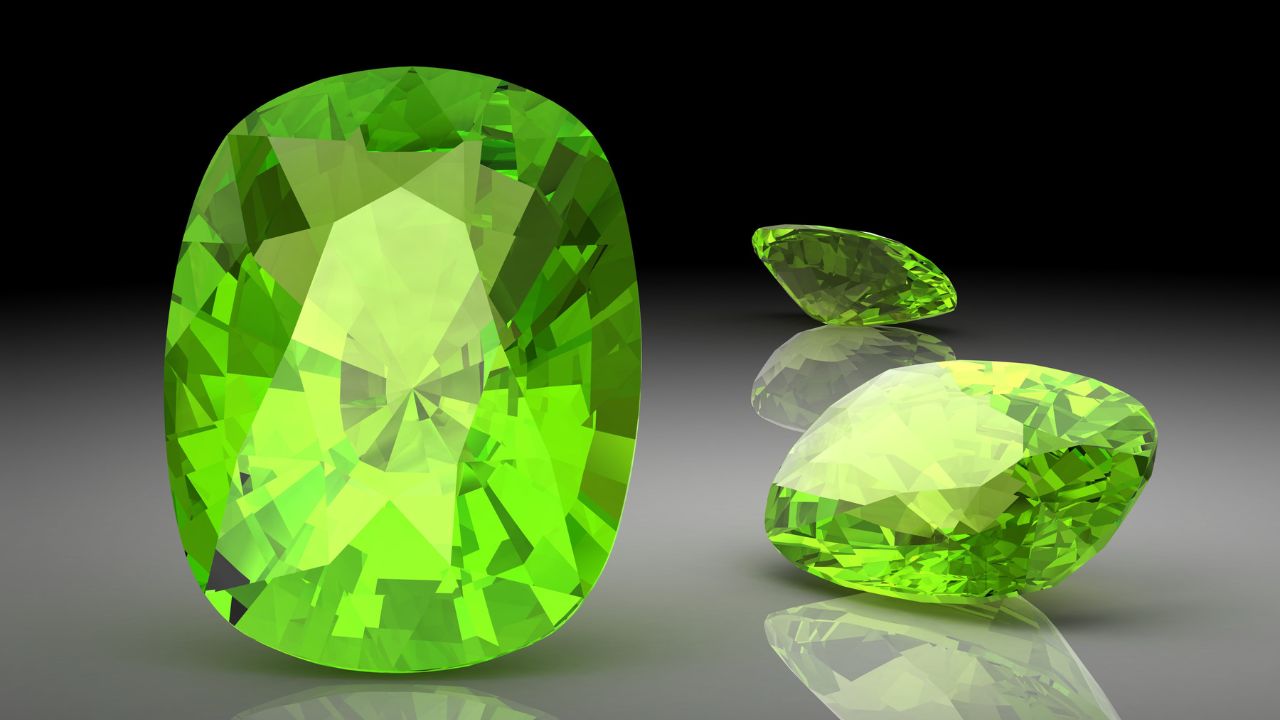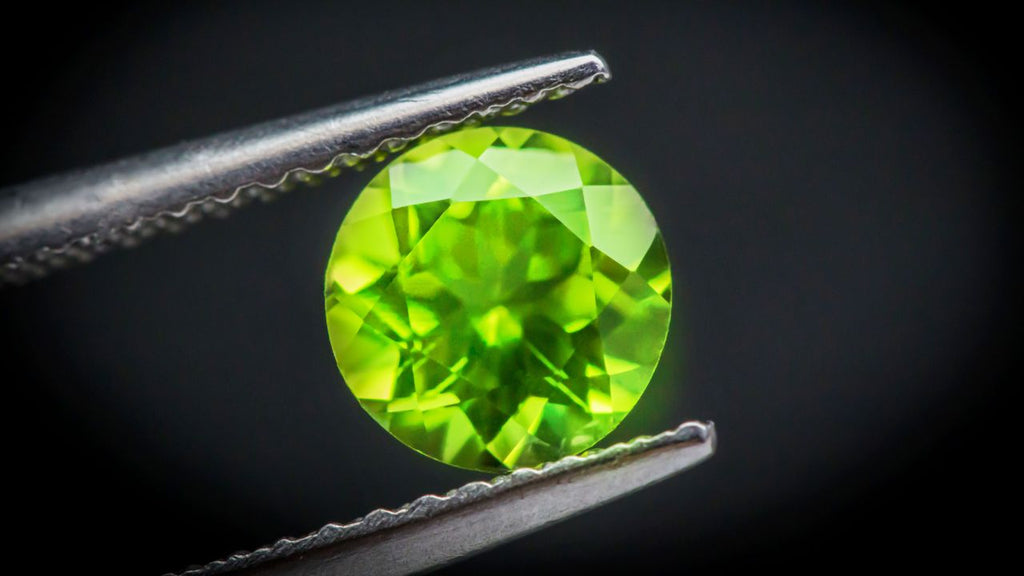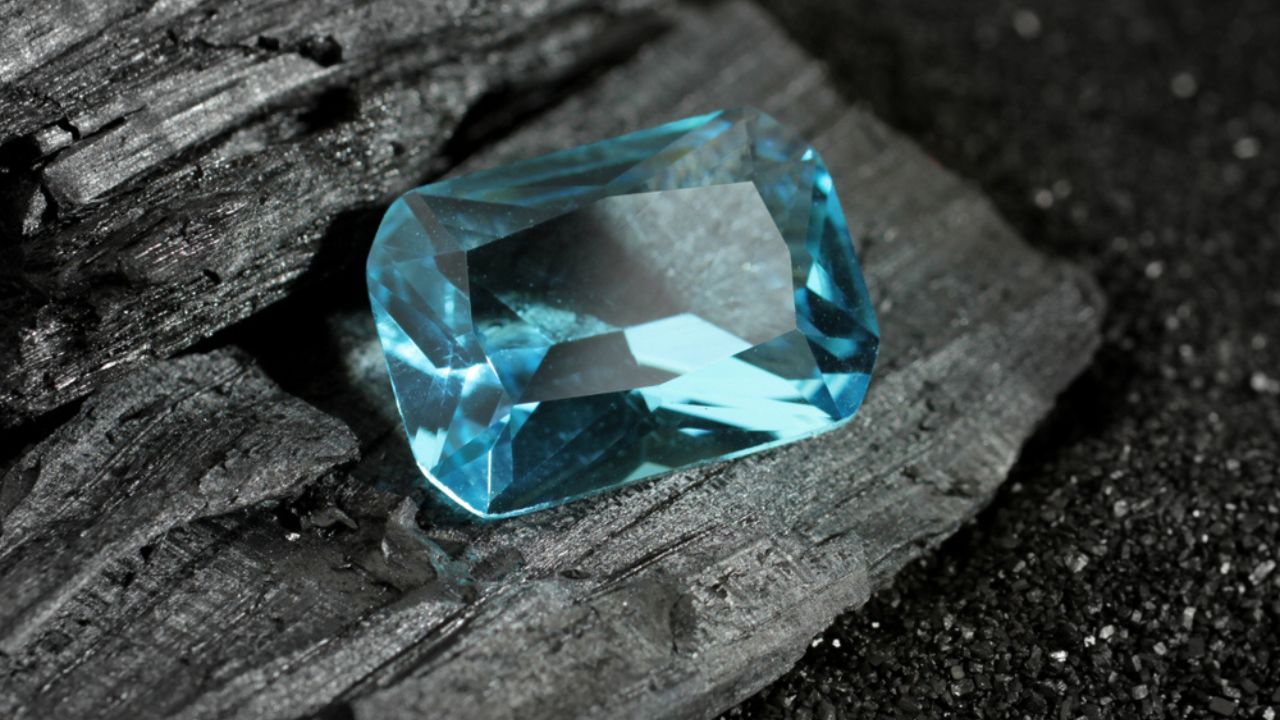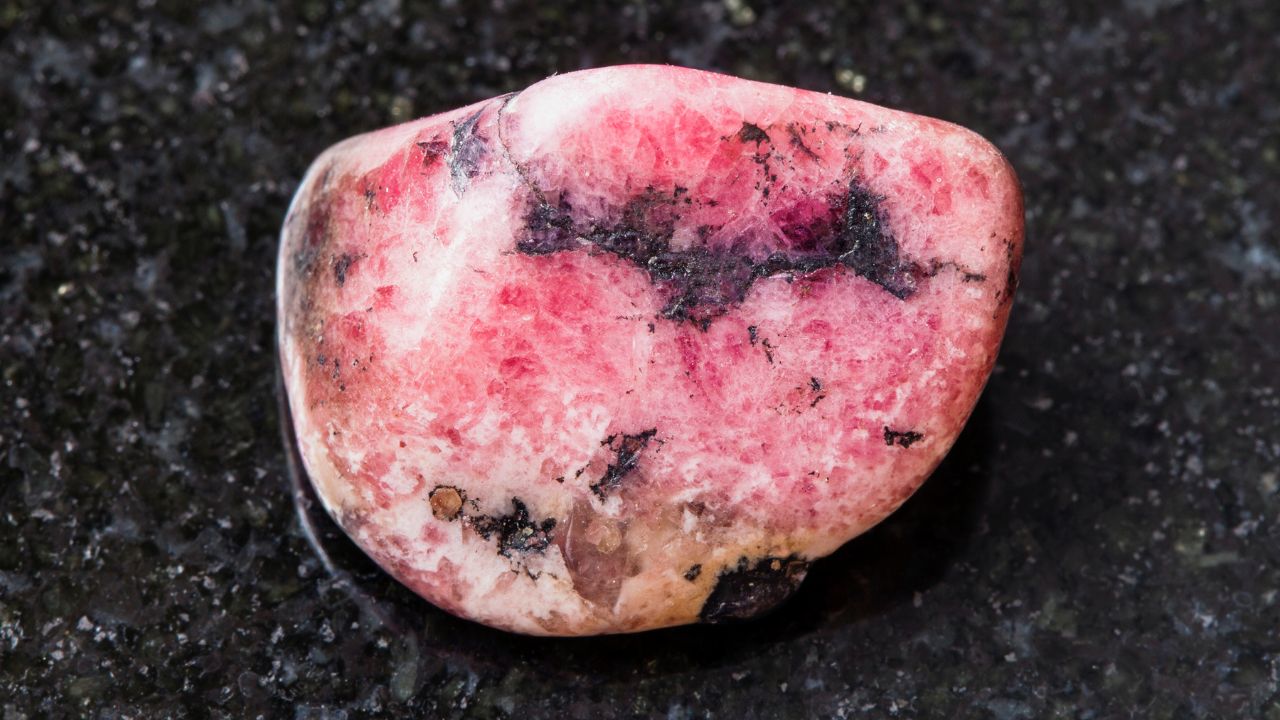
Where is the Gemstone Peridot From?
Hailed as the "evening emerald" for its lush green hues, peridot has captivated jewelers and gem lovers for ages with its vibrant color and understated elegance. Today most believe its attractive verdancy and reasonable price make it an overlooked gemstone treasure.
But despite peridot's growing popularity over recent years, many consumers still ponder where exactly this green phenom originates from before buying it. The genesis of peridot remains shrouded in some mystery.
Most hail from Arizona now, but archaeological findings place it origins closer to Egypt and Hawaii. Unraveling truths about where peridot is found sheds light on the rich story behind this lush gem.
The Enchanting Origins of Peridot
Peridot, with its mesmerizing green hue, has a captivating history that dates back centuries. This section will delve into the enchanting origins of peridot, shedding light on its geological formation and historical significance.
Peridot is believed to have ancient origins, originating deep within the Earth under extreme conditions. Its formation is closely tied to volcanic activity, as it is often found in lava flows and volcanic rocks.
In ancient times, peridot was highly valued and revered for its beauty and mystical properties. It was believed to possess healing powers and offer protection against evil spirits. Peridot was also associated with love, abundance, and spiritual growth.
The geological origins of peridot can be traced to specific regions around the world. Notable sources include Egypt, where it was discovered on the volcanic island of Zabargad in the Red Sea, and Myanmar (Burma), where it is found in the Mogok region.
Peridot has a rich history intertwined with various cultures and civilizations. It adorned the jewelry of Egyptian pharaohs, such as Cleopatra, and was believed to be a favorite gemstone of King Solomon. It has also been associated with religious and spiritual practices, symbolizing purity and divine connection.
Today, peridot continues to captivate the hearts of gemstone enthusiasts and jewelry lovers alike. Its enchanting origins and vivid green color make it a truly unique and cherished gemstone.
Peridot: A Gem of Many Names
The beautiful gemstone peridot, which is known for its bright green color, has been called many things over the years. The gem has a mysterious air about it because of these other names. Each name tells a different story. Finding out where the word "peridot" comes from or how it was mistakenly named in the past is an interesting journey through the different names this gemstone has had.
Etymological Mysteries: Peridot or Faridat?
When it comes to the etymology of the word "peridot," there are lingering mysteries that add an enchanting touch to the gem's history. Some believe "peridot" was derived from the Arabic word "faridat," which translates to "gem," reflecting the gemstone's esteemed status throughout the ages.

Throughout history, peridot has been misidentified with other gemstones due to their similar appearance. This misidentification has led to confusion and created different names for peridot.
For example, peridot has often been mistaken for emerald, resulting in names like "evening emerald" or "poor man's emerald." Understanding these historical misidentifications sheds light on the gemstone's journey and the challenges faced by gemstone enthusiasts in correctly identifying and appreciating peridot.
| Alternate Names | Reasons/Circumstances |
|---|---|
| Evening Emerald | Historical misidentification with emerald |
| Chrysolite | Historical name used for peridot in ancient times |
| Olivine | The mineral group to which peridot belongs |
| Zabargad | Reference to the ancient Egyptian source of peridot |
Global Deposits and Peridot Mining Locations
Peridot is sourced from various regions across the globe. This section will uncover some of the most significant peridot mining locations, unveiling the geographical origins and production sources of this captivating gemstone.
Riches of the San Carlos Apache Reservation in Arizona
One notable peridot mining location is the San Carlos Apache Reservation in Arizona, USA. This region is renowned for its abundant peridot deposits. The deep olive-green peridot gemstones found in this area are sought after for their exceptional color and clarity.
The San Carlos Apache Reservation boasts a rich mining history dating back centuries, with a strong cultural significance attached to the extraction of peridot from its lands. The partnership between the Apache people and the peridot industry showcases the importance of sustainable mining practices and cultural preservation.
Discover the bountiful treasures that lie within the San Carlos Apache Reservation as peridot mining continues to flourish, providing a source of pride and economic prosperity for the Apache community.
The Island of Zabargad: An Ancient Source
Located in the Red Sea, the remote Island of Zabargad has served as an ancient source of peridot. This enchanting island boasts a storied past, with peridot mining dating back thousands of years to the time of the ancient Egyptians.
The peridot extracted from the Island of Zabargad is revered for its vibrant green hue. This unique color, often referred to as "Zabargad green," is highly coveted among gemstone connoisseurs and jewelry enthusiasts.
Unearth the captivating history and wealth of peridot that resides on the Island of Zabargad, as it continues to captivate the world with its ancient allure.

International Treasures: Peridot around the World
Peridot can be found in various countries around the world, each offering its own distinct beauty and character to this remarkable gemstone.
From Pakistan's high-altitude mines in the Himalayan region to the volcanic landscapes of Hawaii, peridot mining countries span the globe, showcasing the diverse geological environments in which this gemstone thrives.
Other notable peridot mining locations include Myanmar, China, Tanzania, and Vietnam. These countries contribute to the global peridot production, each providing its unique supply of this alluring gemstone.
Embark on a global journey as we explore the peridot mining countries, uncovering the geographical tapestry that gives rise to the remarkable peridot deposits found around the world.
Peridot, with its vibrant green hue, has a volcanic origin that adds to its allure. This exquisite gemstone forms within volcanic environments and is often associated with lava flows. The intense heat and pressure of volcanic activity create the conditions necessary for the formation of peridot.
During volcanic eruptions, molten rock called magma rises to the Earth's surface through cracks and fissures. As the magma cools and solidifies, it forms igneous rocks, including the volcanic rock known as basalt. It is within these basalt rocks that peridot is born.

The volcanic birthplace of peridot gives it unique characteristics. Its formation within lava flows gives it a rich, fiery energy that is often associated with transformation and renewal. This connection to volcanic activity adds to the mystique and allure of peridot as a gemstone.
Peridot's Extraterrestrial Journey: Meteorites
An interesting extraterrestrial connection is associated with peridot. A cosmic twist is added to the story of peridot when it is discovered in meteorites, although it is more commonly found in Earth's mantle and volcanic environments. Peridot is an extraterrestrial gemstone with some interesting characteristics; let's look at why meteorites contain it.
From Space to Earth: Peridot in Pallasite Meteorites
One of the meteorite groups known to contain peridot is the pallasites. Pallasites are a type of stony-iron meteorite that consists of a matrix of olivine, which is where peridot is found, embedded in a metal matrix of nickel-iron. These celestial specimens offer a rare glimpse into the extraterrestrial presence of peridot on our planet.

Chemical Uniqueness: How Extraterrestrial Peridot Differs
Palasite meteorites contain extraterrestrial peridot, which differs chemically from peridots found on Earth. Peridot differs from meteorites in a number of ways, one of which is its chemical composition. Scientists study these variations to learn more about the meteorites' formation and the geological processes that shaped them.
Even though it came from another planet, peridot from pallasite meteorites has the same captivating green color and lively energy that makes it a valuable gemstone. The mysterious and awe-inspiring cosmic journey of peridot enhances its charm.
Peridot's Fascinating Inclusions and Mineral Properties
Peridot is a beautiful and unique gemstone. Aside from its color, peridot has intriguing inclusions and unique mineral properties that add to its allure.
Let's explore the intriguing world of peridot inclusions and delve into its gemological features.
Peridot inclusions are naturally occurring materials or substances that are trapped within the gemstone during its formation. These inclusions can vary in size, shape, and color, and they provide valuable information about the gemstone's geological history. Some common peridot inclusions include mineral crystals, tiny fractures, and even liquid-filled cavities.
These inclusions not only make each peridot gemstone unique but also contribute to its overall character and beauty. They create mesmerizing patterns and formations that add depth and interest to the stone's appearance. Peridot inclusions often have a distinct look that sets them apart from other gemstones, making them easily recognizable by gemologists and collectors.

Aside from its inclusions, peridot also possesses specific mineral properties that make it distinct from other gemstones. Peridot is composed of the mineral olivine, which belongs to the silicate mineral group. It has a Mohs hardness of 6.5 to 7, indicating its durability and suitability for various types of jewelry.
Peridot also has a relatively high refractive index, which contributes to its brilliance and sparkle. The gemstone exhibits a vitreous to greasy luster, further enhancing its visual appeal. Additionally, peridot is known for its exceptional transparency, allowing light to pass through the gemstone with minimal obstruction.
When it comes to gemological features, peridot exhibits a range of optical phenomena that add to its beauty. These phenomena can include pleochroism, where peridot displays different colors when viewed from different angles. Many peridot gemstones exhibit a yellowish-green or olive-green color, but some may also display a brownish or golden hue.
Gemstones like this are popular in jewelry. Its unique properties make it a versatile choice for contemporary and traditional designs, adding refined elegance to any piece.
Peridot jewelry has become a fashion statement and symbol of taste in recent years. Necklaces, earrings, bracelets, and rings with it add color and nature's beauty to any outfit. Peridot jewelry comes in many styles and occasions, from statement pieces to delicate accents.
Care for peridot jewelry requires some considerations. Peridot gemstones work well for daily wear due to their moderate Mohs hardness. Peridot jewelry must be handled and stored carefully to avoid scratches and damage. To preserve its beauty, keep the gemstone away from harsh chemicals, extreme temperatures, and sunlight.
Clean peridot jewelry regularly to maintain its beauty. Clean the gemstone with warm water and mild soap to remove dirt and oils. Avoid water spots by rinsing and drying jewelry with a soft cloth.
Use of peridot in jewelry requires knowledge of its durability. The Mohs Scale rating of 6.5 to 7 makes the gemstone suitable for daily wear. Although peridot is durable enough for most jewelry settings, it should be protected from rough treatment and high-impact activities.
| Peridot Care and Maintenance Tips |
|---|
| Handle peridot jewelry with care to prevent scratches and damage. |
| Avoid exposing peridot to harsh chemicals, extreme temperatures, and excessive sunlight. |
| Clean peridot jewelry regularly using warm water and mild soap. |
| Rinse the jewelry thoroughly and pat it dry with a soft cloth to avoid water spots. |
Cultural and Historical Significance of Peridot
There are many cultural and historical meanings associated with peridot, and it also has unique metaphysical properties. This stone has been revered by many cultures and is linked to many beliefs and ideas.
In ancient Egypt, people called it "the gem of the sun," which meant protection and wealth. People thought that peridot could keep away evil spirits and bring good luck to those who wore it. It was known as the "evening emerald" in ancient Rome and was a valuable gem that royalty wore because it was thought to ward off nightmares and bring happiness.
In modern culture, peridot is linked to plenty, growth, and renewal, which promotes good energy, balance, and harmony. Its green color represents the cycle of life and change, and its connection to the heart chakra stands for love, compassion, and spiritual growth.

On a spiritual level, peridot helps with healing and protection and makes it easier to be clear, creative, and express yourself. It clears the aura of negative energy and brings peace and tranquility to the mind. People have worn peridot for a long time because it is very beautiful, has a lot of cultural history, and has a lot of meaning.
Peridot is the birthstone for the month of August. For people born in this month, it has a special meaning because it stands for wealth and luck. Peridot, which is also called the "evening emerald," is a beautiful stone that has a mysterious appeal.
Peridot as a Symbol of Prosperity and Good Fortune
Peridot has long been associated with abundance and success. It is believed to attract wealth, prosperity, and good luck into the life of the wearer. This enchanting gemstone is believed to bring positive energy and create a harmonious environment, making it a popular choice for those seeking abundance and blessings in their lives.
The Mystique of the Evening Emerald
The nickname "evening emerald" perfectly captures the essence of peridot's allure. With its bright green color reminiscent of lush foliage, peridot evokes a sense of serenity and rejuvenation. Its stunning brilliance radiates a captivating energy, making it an ideal gemstone for both casual and formal occasions. The mystique surrounding peridot adds to its charm, making it a gemstone that truly stands out.
Conclusion
Peridot continues to interest both gem lovers and historians because it comes from a lot of different places and was formed in a volcano.
One interesting thing about peridot is that it has been found in meteorites, which gives the story of this gemstone an extraterrestrial twist. It is a very rare and beautiful gem because of the way its chemicals are put together and the way minerals behave.
It is impossible to ignore how important Peridot is to culture and history. Different cultures have looked up to it as a sign of wealth, good luck, and protection against evil spirits. Peridot is also the birthstone for August, so people born in this lively summer month have a special place in their hearts for this stone.
To sum up, peridot is a beautiful example of the variety and beauty that can be found in the Earth's crust and beyond. It is a very valuable and beautiful gemstone because of its interesting history, beautiful origins, and interesting inclusions. Peridot continues to enchant everyone who sees it, whether it's used in jewelry or revered for its spiritual powers.
FAQ
Where is the gemstone peridot from?
Peridot is found in various regions around the world, including the San Carlos Apache Reservation in Arizona, the island of Zabargad, and other international locations.
What is the origin of peridot?
Peridot has a volcanic origin and is often associated with lava flows.
What are some other names for peridot?
Peridot has been known as "faridat" in Arabic and has been historically misidentified under various names.
Where is peridot found and mined?
Peridot is mined in locations such as the San Carlos Apache Reservation in Arizona, the island of Zabargad, and other international deposits.
How is peridot formed?
Peridot is formed within volcanic environments under extreme conditions.
Can peridot be found in meteorites?
Yes, peridot can be found in pallasite meteorites, adding an extraterrestrial element to its story.
What are the inclusions commonly found in peridot?
Peridot can exhibit various inclusions, including tiny mineral crystals, gas bubbles, and even other rocks.
How is peridot used in jewelry?
Peridot is a popular gemstone used in jewelry and can be crafted into various types of adornments, including rings, necklaces, and earrings.
What is the cultural and historical significance of peridot?
Peridot has held cultural and historical significance, symbolizing various meanings and possessing metaphysical properties throughout history.
What does peridot symbolize as a birthstone?
Peridot is the birthstone for the month of August and is associated with prosperity, good fortune, and the nickname "evening emerald."


